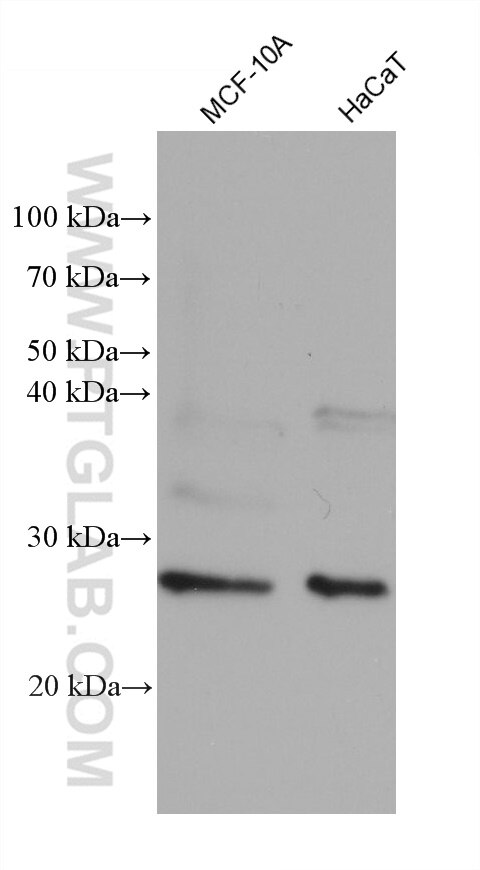Tested Applications
| Positive WB detected in | MCF-10A cells, Mo7e cells, HaCaT cells |
Recommended dilution
| Application | Dilution |
|---|---|
| Western Blot (WB) | WB : 1:2000-1:10000 |
| It is recommended that this reagent should be titrated in each testing system to obtain optimal results. | |
| Sample-dependent, Check data in validation data gallery. | |
Product Information
68603-1-Ig targets RAB38 in WB, ELISA applications and shows reactivity with Human samples.
| Tested Reactivity | Human |
| Host / Isotype | Mouse / IgG2a |
| Class | Monoclonal |
| Type | Antibody |
| Immunogen | RAB38 fusion protein Ag26440 Predict reactive species |
| Full Name | RAB38, member RAS oncogene family |
| Calculated Molecular Weight | 211 aa, 24 kDa |
| Observed Molecular Weight | 24 kDa |
| GenBank Accession Number | BC015808 |
| Gene Symbol | RAB38 |
| Gene ID (NCBI) | 23682 |
| RRID | AB_3085299 |
| Conjugate | Unconjugated |
| Form | Liquid |
| Purification Method | Protein A purification |
| UNIPROT ID | P57729 |
| Storage Buffer | PBS with 0.02% sodium azide and 50% glycerol , pH 7.3 |
| Storage Conditions | Store at -20°C. Stable for one year after shipment. Aliquoting is unnecessary for -20oC storage. 20ul sizes contain 0.1% BSA. |
Background Information
The RAB family of small GTPases is part of the Ras protein superfamily and is primarily responsible for regulating intracellular vesicle transport and migration. RAB38 is a recently identified member of the RAB family of proteins and its expression is tissue-specific. RAB38 is predominantly expressed in melanocytes and melanoma tissues, but not in other normal tissues, serving as a melanocyte differentiation antigen. RAB38 has also been reported to be upregulated in glioblastoma, and high levels of its expression are associated with a poor prognosis and enhanced cell migration.
Protocols
| Product Specific Protocols | |
|---|---|
| WB protocol for RAB38 antibody 68603-1-Ig | Download protocol |
| Standard Protocols | |
|---|---|
| Click here to view our Standard Protocols |





